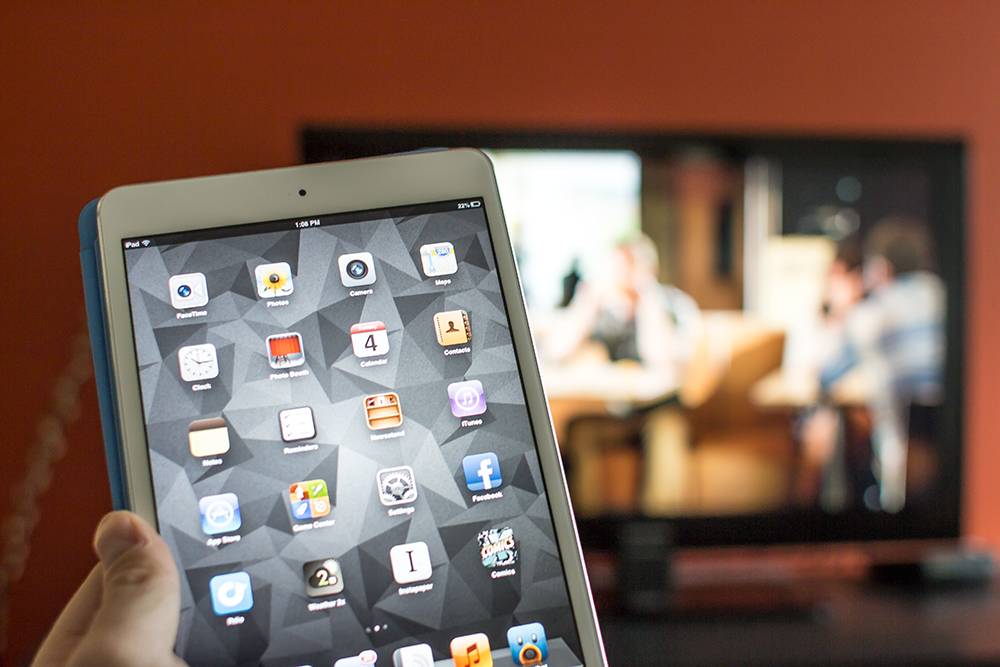 One thing that’s become apparent about the iPad mini during my past few days with it is just how well it fills the role of a second-screen device. The iPhone and the iPad both have their merits as a companion while lounging around and watching TV, but the iPad mini hits the sweet spot of portability, power and connectivity for that use case. Fellow TC writer MG Siegler already explained why he thinks the iPad mini will eventually overtake the full-sized iPad as the sales leader for Apple, and I agree 100 percent, but zeroing in on its second screen suitability might help convince those who still doubt that the smaller iPad will eventually take the crown.
One thing that’s become apparent about the iPad mini during my past few days with it is just how well it fills the role of a second-screen device. The iPhone and the iPad both have their merits as a companion while lounging around and watching TV, but the iPad mini hits the sweet spot of portability, power and connectivity for that use case. Fellow TC writer MG Siegler already explained why he thinks the iPad mini will eventually overtake the full-sized iPad as the sales leader for Apple, and I agree 100 percent, but zeroing in on its second screen suitability might help convince those who still doubt that the smaller iPad will eventually take the crown.
Second screen experiences are increasingly common; startups like Fanatix, GetGlue, MOVL, and countless others are developing platforms and apps to help users get more out of their TV viewing experiences, and networks are encouraging hashtag campaigns and turning to Twitter to leverage the conversations already happening there. A recent Nielsen report showed that 86 percent of smartphone owners and 88 percent of tablet owners use their devices while watching TV, and smartphone ownership in the U.S. recently crossed the 50 percent threshold, meaning a huge number of TV viewers are dividing their attention. Second screen isn’t a trend to watch; it’s a living, breathing phenomenon that’s already arrived.
Before the iPad mini arrived, the iPad was the perfect venue for reaching out to TV viewers with value-add experiences. Users of Apple’s tablet tend to be more affluent, more receptive to online advertising and more likely to spend money on their devices. If you’re losing eyeballs during commercial breaks to mobile devices, in a best-case scenario you’re driving additional content complete with related promotions from your advertising partners to those same devices, and in a perfect world, those audiences fit the demographic tendencies of iPad owners.
While it’s too early to tell for sure, I’m willing to bet the iPad mini’s user base will resemble the iPad’s more so than it’ll look like the ownership population of cheaper, Android-based devices. And because of the iPad mini’s key areas of difference compared to the iPad (over 50 percent lighter, 23 percent thinner), it’s a much more convenient device to pick up and put down frequently while watching TV programming. Plus, it has access to the same software library as its bigger cousin, meaning developers don’t necessarily need to go back to the drawing board to create second screen apps for a new form factor.
The iPad mini’s size makes it a take-anywhere device, and its screen real estate ensures that users won’t just give up on engaging with content that might involve a lot of reading or might be a better handled on a desktop than on a tiny smartphone screen. And the device isn’t compromised in terms of connectivity or capabilities, either; the cameras are good, it’s got Bluetooth, optional cellular connectivity and all of the AirPlay capabilities of its bigger sibling, all of which could potentially be leveraged by developers to make second screen activities more engaging.
In reality, the iPad mini is better for a number of use cases than its larger predecessor, but it seems like the perfect couch companion after a few days of thorough testing of that theory. With mobile tech moving steadily toward a place of prominence in the family living room, watch for the iPad mini to become the pace setter in this key changing facet of home entertainment.